At 15, the iPhone is a remarkably composed and self-assured teenager. Few objects have seen as much adulation and refinement over their relatively short lifespan. Perhaps that's because of the intense scrutiny the iPhone faced even before Apple co-founder and CEO the late Steve Jobs took the stage at Macworld to unveil it on January 9, 2007.
The original iPhone - sometimes referred to as "The Jesus Phone" for its potential to save and elevate an entire industry - was a very big deal. And a big risk. No other phone manufacturer, not the then dominant BlackBerry or T-Mobile with its hugely popular Sidekick, had taken such a big swing.
We'd never seen a handset with such a big touch screen (3.5-inches!) and virtually no buttons, save the home button and power and volume on the sides. It ran the risk of being the most inscrutable device of the century. If you handed it to someone, they might stare at it and then you, pleading, "What the hell do I do with this?"
There are things we forget about that first iPhone:
Lost history
It was not an amazing phone. It supported just one carrier in the US: AT&T and it could take up to six steps before you could make a call.
The iPhone was a fantastic iTunes companion, offering the most virtual way ever to manage your music library, but it had a terrible little speaker.
It played videos but they looked awful on the small, low-resolution screen.
Apple initially limited the iPhone to a handful of built-in widgets for things like Stocks, YouTube, Weather, and the Web but forbid the installation of third-party native apps. It supported, instead, Web apps. For some, the inability to install apps in the way BlackBerries and Palm phones already could made the iPhone less than a true "smartphone." Apple smartly reversed this decision by the summer of 2008 when it opened the App Store.
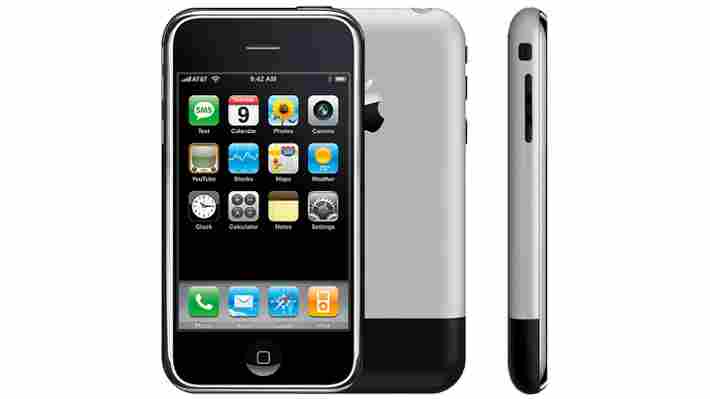
My favorite bit of trivia is that, even after the official iPhone launch, Apple did not own the "iPhone" brand name . Networking company Cisco acquired it in 2000 along with the long-forgotten company InfoGear. Few knew up until the week after launch that Apple'd been engaged in intense negotiations with Cisco for years.
I remember us all joking about what Apple might end up calling its device if it couldn't keep the iPhone name: "Apple Phone" was an obvious choice, but "Steve Phone" made us laugh. A month later, the two companies settled.
I wasn't immune to the intense interest surrounding the device. While I didn't attend Macworld, I tracked the launch and then launched my own quiet campaign to be among the first to hold and review one of the phones. I was Editor in Chief of PC Magazine, so I thought I had a chance.
I did not.
First encounter
In July of 2007, though, Jobs chose four tech journalists to seed with the new device: David Pogue (New York Times), Steve Levy (Newsweek), Walter Mossberg (Wall Street Journal), and Ed Baig (USA Today). I was acquainted with all of them but none of them well enough to call up and say, "Hey, can I see that phone?"
What's more, Apple's rules for these early review units were strict. While the journalists were expected to carry around and review the original iPhone, they were also supposed to keep it out of sight and the hands of anyone else (I still remember having the first iPad and being afraid to let my family touch it).
It's hard to review a product if you keep it in your pocket all the time, so Ed Baig can be forgiven for pulling the iPhone out of his pocket at an industry event (this was a couple of days after the review embargo lifted but before general availability). I swear, I smelled the phone before I saw it and made a beeline to the estimable tech scribe.
"Is that the iPhone?"
Ed stared at me blank-faced for a moment.
Then his face broke into a huge smile and he acknowledged that he was holding "The Jesus Phone."
When I asked if I could hold it, Baig complied, but his eyes were focused on my fingers as they moved over the smooth plastic, glass, and metal body. In my head, I heard the whisper, "So, so sexy."
I pressed the home button, since that seemed like the obvious thing to do, and then started tapping on icons. I think I hit Weather, Safari, Maps, and Photos. Ed said nothing as I intuitively navigated the widgets, websites, and pinching and zooming photos.
After a few minutes, I carefully handed the phone back to Ed, who silently slipped it back into his pocket.
The illicit act was risky for him and world-altering for me.
It changed everything
For all the things that this iPhone wasn't (great phone, excellent media player, a true smartphone), I then knew it was a paradigm shift. Anyone who touched this device was bound to feel similarly, that it was intuition in physical form.
There has never been a phone quite like it and everything that followed it would bear its influence.
In an industry where multiple platforms and device styles existed, each in its own orbit, the universe of cellphone design realigned itself to, at least for a time, put the iPhone at its center.
15 years later, the iPhone remains a premier brand among rivals, but it no longer owns the innovation curve alone. What Apple did was reinvent the phone, but it also paved a clear path for competitors who also shed buttons and built ever-bigger multi-touch displays.
Every smartphone on the planet owes a debt to that first iPhone but the focus of smartphone innovation into a single design language (big screen, thin, glass and metal chassis, excellent cameras) has led to a tech sector that's far less interesting than it was in 2007 when Steve Jobs took the stage and reinvented a product category.
[Updated to reflect the fact that Ed Baig did not break his embargo agreement with Apple when he handed me the first iPhone]
Interview: Usain Bolt on gaming and Virgin Media hyper-fast Gig1 broadband “To see myself in 4k as a hologram was mind blowing'
As Virgin Media O2 celebrates its superfast Gig1 broadband going into its 15 millionth UK home, it showed us just how speedy it is with high-quality PORTL hologram technology.
We get a glimpse into how the future of gaming is going to evolve, as they surprise a handful of lucky superfans with the hologram gaming experience and fastest-man-alive Usain Bolt to demonstrate the clear difference in speed with Gig1 broadband.
How hologram tech is changing the future for Gaming Influencers
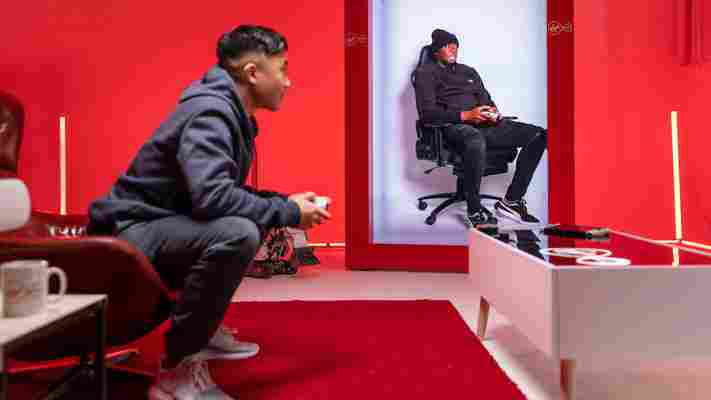
Olympic sprinter Usain Bolt and Alex, a 16 year old up-and-coming British 100 metre sprinter from London—who happens to be a Bolt mega-fan—played online games with a twist as the Jamaican Olympic Gold medallist appeared virtually as a 4K hologram, giving the illusion that he was in the same room.
We asked Alex how he thought having hologram tech at home would change his gaming experience in the future:
“It would make the experience feel more real, as if my friends were really there with me in the room. I believe instead of speaking over the mic, speaking and seeing your friends through the PORTL will make the whole gaming experience much more enjoyable and sociable.”
Survey: more than 60% cite gaming as favourite way to communicate
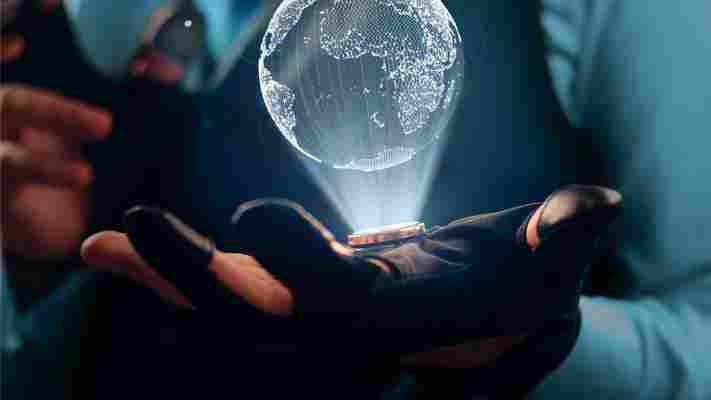
Today most gamers rely on headsets as their main means of communication while playing, but the PORTL hologram technology, powered by hyper-fast broadband from Virgin Media, allowed for improved teamwork as the lack of latency and the quality of the hologram was apparent.
New research from Virgin Media's hologram gaming campaign found that out of the 700 British people surveyed, more than half (60%) cite gaming as their new favourite way of communicating, with 40% preferring to game against friends via hologram than in person.
As a self-proclaimed gamer, Bolt told TechRadar from the hologram gaming room: “To see myself in 4K as a hologram was mind blowing and I think Virgin Media is doing a great job moving forward with their broadband.
“This hologram is breaking barriers and the possibilities are endless. I have a feeling that people are going to use it a lot in the near future.”
Bolt also revealed that while he uses Virgin Media broadband in his home in the UK, he would very much like to see the broadband service provider in his hometown in Jamaica.
Fancy a future in Hologram tech? You'll need superfast internet
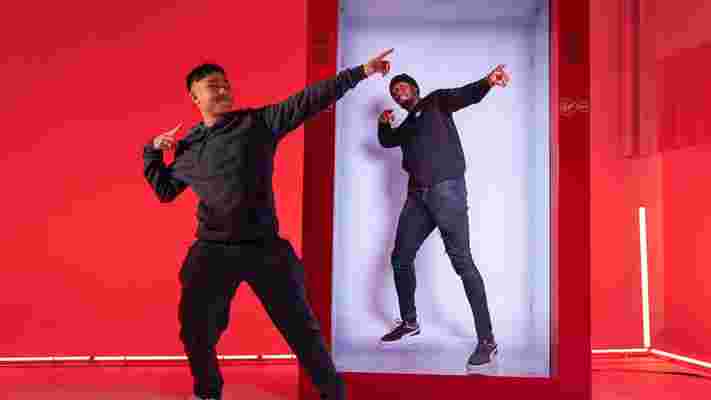
With all the glitz and glam that comes with hologram technology, it’s easy to be less concerned with what makes it all possible.
The three-dimensional image generated by interfering beams of light that reflect real, physical objects, is reliant on fast broadband to aid with the media and audio being transmitted.
The hologram gaming experience marked the completion of Virgin Media O2’s Gig1 broadband rollout to its entire network. Bringing to life the future of hyperfast broadband, 94% of gaming Brits are reliant on a good quality broadband connection, according to Virgin.
Speaking to Oliver Kibblewhite, founder of The 5Gs, he explains, “Gig1 enables superfast update speed so we don't have to spend literal time compressing that video down. If you are doing Zoom at home, your computer spends a lot of time compressing the video down to be as small as possible so it can fit up the sub-par internet quality you may have at home."
Holograms will allow us to connect and communicate differently
Bolt’s gaming opponent, Alex, said the hologram technology could help people connect in a more realistic and sociable way, especially during the pandemic.
“It would help businesses, organizations and people who use social media, to communicate in such a realistic way without travelling to see them, saving time and increasing productivity to a certain extent. Hologram tech is the future,” he added.
We’ve already seen injections of hologram technology in the past, including holographic maps of “battle-spaces” for the US army, as well as hologram gaming arcades .
Jeanie York, Chief Technology Officer at Virgin Media O2, said: “This incredible hologram technology, brought to life by the world’s fastest man Usain Bolt, shows just how far we have come in how we can engage, communicate and socialise in a virtual world.
“Our gigabit broadband speeds can power the British homes of today and the future which will continue to consume more cutting-edge technology over the coming years as we find new and innovative ways to stay connected to the people that mean the most."
Hologram tech is quietly becoming the standard of business communication
How often is your life grounded in an offline reality? It’s not a trick question, it’s a very normal one we could all be asking sooner than expected, thanks to advances in communications tech—especially in the workplace, and at home.
With all the recent fuss around the Metaverse, NFT popularization and a ramping up of remote working that has seen the majority of us shift to living more of our lives online, the notion of a second, virtual life is becoming ever more commonplace.
At the Facebook Connect October 2021 event Mark Zuckerberg happily shared his vision of the metaverse as one where we all engage “across different layers of reality.” Supporting his point, as of June 2021 over 70 million users across 200 countries had registered on the website of virtual world, Second Life.
In fact, at the peak of the pandemic in March 2020, Forbes found COVID-19 had raised American’s “internet use 70% and streaming more than 12%.” Meanwhile in the UK, the BBC reported that broadband use had doubled nationally in December 2020.
In response shortly afterward, multiple tech giants including YouTube and Facebook significantly lowered the quality of video streaming to reduce network strain in Europe. So the question for 2021 quickly became: as we increasingly live our lives online, how will network speeds bear the strain?
After all, network strain will continue to be a public challenge that affects the speed with which we can call colleagues, communicate with loved ones over FaceTime or simply send a WhatsApp message. To combat this, broadband provider Virgin Media is stepping up its network offering with superfast Gig1 Broadband.
To test the speed and quality of Gig1, we met up with Virgin Media and its brand ambassador eight time gold-medal winning sprinter Usain Bolt. Bolt and Virgin Media are currently celebrating Gig1 broadband being installed in the 15 millionth home in the UK.
To demonstrate just how fast the Gig1 broadband is, they were kind enough to invite us to try out hologram streaming tech PORTL.
As Greg Furber, the Creative Director of Creative Agency The 5Gs explains to us, “Today we are here to use Virgin’s Gig1 to show the speed and the latency [of the superfast broadband] and to do that, we are using PORTL [made by a company with the same namesake], which is essentially a hologram box. It’s a 4K 60 screen, the only one in the UK and one of very few in Europe.
"It's a new technology that came out pre-pandemic and is slowly rolling out in two phases. The guy who did the famous Tupac Coachella (2012) hologram is the guy that went on to found PORTL, so it’s very much a progression of that kind of technology. The plan for the hologram is to have it everywhere, and it would also do well in the retail industry.”
We were set up in two separate rooms to play video games, with one of us being projected into the PORTL hologram box that stood right next to the other player in the corresponding room. Thanks to the superfast Gig1 broadband we were able to see each other with crystal clarity as a hologram and hold a conversation whilst playing a video game in real-time.
Greg explains what’s happening behind the scene to us, “The power of the [broadband] connection lets it run 200 milliseconds latency rather than a second or two where you get things like Zoom.
"This allows you to send a much less compressed signal, which gets out of the building a lot quicker, which means there is less latency on the line when it’s going where it needs to."
How hologram technology works
How exactly does the hologram technology work? Using the PORTL hologram tech and high end broadcast equipment The 5Gs team were able to transmit real-time “video signals and reduce latency on the encode and stream” of Usain Bolt to mega-fan Alex.
Holography tech as a business communication tool
Using hologram tech is nothing new, but the technological advances that have come from hologram development in recent years are allowing us to use the technology more everyday.
In our professional lives we are already seeing the impacts of hologram tech. The Microsoft HoloLens 2 is described as an “ergonomic, untethered self-contained holographic device with enterprise-ready applications to increase user accuracy and output.”
It has many potential uses, including training medical staff remotely for quicker onboarding of junior doctors, encouraging remotely-based office teams to collaborate more visually using hologram tech, as well as being another means of accessibility for those who have mobility impairments.
In October of 2021, Cisco also released plans for their own augmented reality headset tech, namely Webex Hologram. Of course they’re still trialling the software, and hologram tech can take a while to get right as we saw with the flop of the RED Hydrogen One mobile phone in 2018 . So for now, it’ll still be the same standard VoIP-based business telecommunications as usual.
But as gamification becomes ever more favoured in employee training, and Gaming Influencers grow in popularity , hologram tech could be a part of our daily lives sooner than we think—just look at PORTL.
The 5Gs Creative Director, Greg Furber explains the benefits of Holography best, “with Virtual Reality (VR) and other shared space tech, they overlook the fact you need a headset on so there’s that barrier. This hologram is the closest you’ll get to ‘in person’.”
Listen to the full interview with TechRadar and Usain Bolt
Casio reveals retro-cool G-Shock watch inspired by the Rubik's Cube
Casio has released its most retro watch to date: a G-Shock that borrows design cues from the Rubik's Cube. The GAE-2100RC-1AER is an official collaboration with Rubik's, maker of the classic puzzle toy, and features an interchangeable bezel reminiscent of the cube's sides.
Casio's G-Shock range often takes inspiration from unusual places – from volcanic lightning to car components – and in recent months its designers have clearly had fun flicking through the history books for ideas. In November 2020, it released a trio of retro-futuristic watches decked out in black and neon, reminiscent of 1980s classics Tron and Blade Runner, and now it's skipped back to the 1970s.
The watch will go on sale on February 9 at Casio's store on Carnaby Street, London, and a selection of third-party retailers for £139 (about $190 / AU$260).
Keeping it simple
Casio has ventured into the world of smartwatches in recent years, with watches like the G-Shock Pro running Google Wear OS with an impressive range of sports-tracking tools pre-installed.
The new GAE-2100RC-1AER, however, is a classic digital watch that keeps things simple. It features an alarm, countdown timer, stopwatch, auto calendar, dual time and world time – and that's about it.
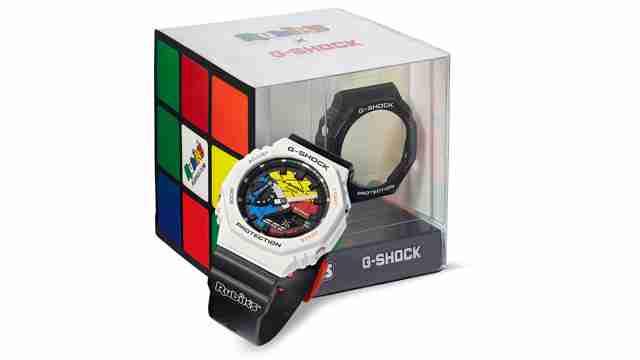
It's seriously tough, though. Despite its playful looks, it's a solidly built timepiece with Casio's Carbon Core Guard to protect its internal components from impacts and vibration, and is topped off with a mineral glass lens. It'll also keep running for up to three years before it needs a battery replacement.
Opinion: smarter isn't always better
Each year, the biggest smartwatch brands release new and updated versions of their biggest selling models, sometimes with only minimal changes. Even a mid-range timepiece can easily cost the same as a decent Chromebook , but will be outdated within a matter of months.
Thankfully most watchmakers support their devices for many years after launch and build quality is improving with each iteration, but if you're looking for something that will really last, a 'dumb' digital watch is still a tempting choice.
The Rubik's Cube-inspired G-Shock won't give you directions to the nearest grocery store, or allow you to make contactless purchases once you're there, but if you're carrying your phone regularly then those might be conveniences you can manage without.
A regular digital watch costs a fraction of most smartwatches, will never hold you up while it finishes a firmware update, can still time your planks and wall-sits at the gym, and will wake you in the morning with a gentle beep. You won't need to plug it in to charge every night either, or make sure it's synced with your phone. It even tells the time.
Perhaps something to consider if you've been considering springing for a new smartwatch to keep you on track in 2022.